
ISSN: 3005-8198 (online) / 3005-818X (print)
Volume 1, Issue 1, pp: 38-51
G. Edlebi1,*
1, *Dept. of Civil and Environmental Engineering, Beirut Arab University, Riad El Solh 11072809, Beirut, Lebanon.
E-mail: g.edilbi@bau.edu.lb 1,*
* Correspondence Author
Received: 10 August 2023 | Revised: 30 August 2023 | Accepted: 17 September 2023 | Published: 24 September 2023
Reinforced Concrete Shear walls are vertical components within a structure that are specifically engineered to counteract horizontal forces, such as those generated by wind or seismic activity. Their primary purpose is to enhance the stability and resilience of the building by redirecting these lateral forces to the foundation. This redirection effectively minimizes the building’s lateral movement during events like earthquakes or strong winds. Nowadays, building owners highly value the ability to ensure maintenance without incurring additional costs even in the face of major earthquakes. To achieve this, it’s crucial to reduce damage and maintain the reparability of structural elements. Multiple shear walls often bear heavy gravitational loads and remain susceptible to brittle breakdown due to shearing forces during lateral seismic loading. This susceptibility substantially increases the risk of a complete collapse of the entire shear wall system. The aim of this research paper is to comprehensively study and analyze various research endeavors concerning retrofitting methods employed to enhance the seismic resistance of new or pre-existing reinforced concrete (RC) shear. This analysis will include real-world case studies of examined structures. Moreover, this paper highlights the future potential and provides recommendations for effective retrofitting practices.
Keywords: Enhance; Reinforced concrete; Retrofit; Seismic; Shear walls.
Buildings constructed using reinforced concrete (RC) before the 1970s, prior to the implementation of contemporary seismic regulations, are categorized as non-ductile structures. These buildings are susceptible to costly and time-consuming repairs. In in severe cases, they might even collapse during significant earthquakes. Reinforced concrete structures with shear wall systems situated in seismically vulnerable regions were often designed using outdated codes that did not account for the necessary ductility requirements. Consequently, these structures exhibit deficiencies in terms of strength and/or ductility, rendering them non-compliant with current seismic safety regulations. Therefore, it becomes essential to undertake retrofitting measures to upgrade these structures and ensure their seismic resilience. Common shortcomings observed in pre-modern seismic code RC shear walls include widely spaced shear reinforcements, insufficient confinement of boundary elements (BE), subpar reinforcement detailing, and flexural reinforcement buckling (Kam et al., 2011; Moehle JP, 2000). These older walls lack ductility and are vulnerable to brittle failure during intense earthquake activity. However, rehabilitating these structures becomes a vital and cannot be ignored to prevent collapses and preserve lives during catastrophic earthquakes.
The implementation of retrofitting techniques to ensure structural stability has been widely employed in historical constructions. Traditional retrofitting methods for RC shear walls has been employed to enhance the seismic performance of reinforced concrete shear walls, mainly focusing on augmenting stiffness and strength through the addition of concrete, steel, or fiber-reinforced polymer composite (FRP) jackets (Kam et al., 2011; Marini & Meda, 2009). While these retrofitting strategies avert structural failure, they still sustain damages that necessitate costly and time-intensive interventions. In recent times, stakeholders have expressed interest in structural solutions that not only preserve lives but also curtail damage and reduce operational disruptions (Calvi et al., 2014). This paper introduces traditional and modern retrofitting techniques of RC shear walls stating their methods as well their importance in enhancing seismic resistance. Actual constructions that have undergone analysis are cited.
Shear walls are a vital component of the lateral force resisting system in reinforced concrete (RC) structures. They are categorized based on their function, which includes bearing walls, non-bearing walls, shear walls, flexural shear walls, and squat shear walls. Shear walls play an essential role in both the stability and performance of structural systems. These vertical load-bearing components efficiently distribute lateral forces, such as wind and seismic loads, throughout a building. This distribution ensures the overall stability of the structure, prevents excessive sway or deformation, supports vertical loads, resists bending moments, and withstands shear forces parallel to their length. Through strategic incorporation of shear walls within a structure, architects and engineers can optimize space utilization while simultaneously upholding structural integrity.
For instance, the iconic ‘Taipei 101’ skyscraper, completed in 2004 in Taipei, Taiwan, employs a sophisticated system of shear walls to withstand both seismic and wind loads (D. C. K. Poon et al., 2004). Its tuned mass damper, combined with a network of shear walls, ensures exceptional stability and minimal lateral movement during extreme events such as typhoons or earthquakes. Similarly, the ‘Transamerica Pyramid’ in San Francisco, built in 1972, relies on its unique triangular shape and an internal core of shear walls to effectively resist lateral forces from seismic activities in a seismically active region (Dunand et al., 2004).
In earthquake-prone regions, shear walls are of paramount importance due to their role in seismic response and lateral force resistance. These walls mitigate the impact of ground shaking by absorbing and dissipating seismic energy, thereby minimizing structural damageand reducing the risk of building collapse. In the 1994 Northridge earthquake, the “Los Angeles City Hall” demonstrated the effectiveness of shear walls in seismic resilience (Youssef et al., 2000). This historic building, constructed in 1928, showcased how its innovative exterior shear wall system helped preserve its structural integrity during the earthquake, highlighting the enduring significance of shear walls in seismic design strategies.
The most straightforward and cost-effective approach for restoring the strength and ductility of reinforced concrete walls is concrete replacement (Fiorato et al., 1983). This method involves eliminating the damaged concrete to expose the old concrete’s aggregate and cleaning the surface to eliminate any loose fragments, thus establishing a solid connection between the old and new concrete. To establish a solid connection with the previous concrete, the upper section may be finished with a high-strength epoxy grout (Vecchio et al., 2002). Once the formwork is removed, the newly poured concrete should undergo proper curing. However, if the shear wall necessitates repair and the building must remain accessible during the procedure, opting for concrete replacement could disrupt the structure’s operation, rendering it unsuitable.
Through this method, the initial web of concrete is supplemented with fresh concrete to extend the wall’s dimensions. The strength and ductility of the wall might be improved by placing additional reinforcement. Fiorato et al. (1983) investigated two reinforced concrete walls, one of which was repaired using diagonal bars after removing the damaged web concrete in the plastic hinge region. The second wall was repaired through web thickening (jacketing). The testing revealed that while the original wall exhibited stiffness approximately twice that of the rehabilitated walls, their strength and deformation capacity had increased (Fiorato et al., 1983).
This method involves affixing steel plates to the wall to enhance its strength, ductility, stiffness, or any of them as depicted in Figure (1).
Elnashai & Pinho (1997) investigated how the application of steel plates into a shear wall rehabilitation strategy could improve a particular attribute (such as strength, ductility, or wall stiffness) without affecting other qualities. Their study concluded that using exterior steel plates connected over the wall’s length near the edges could improve the wall’s stiffness without reducing its strength. Alternatively, to prevent weakening the wall’s strength, as the essential portion would remain intact, plates might be bonded along the anticipated height of the plastic hinge, but there must be a distance among them and the foundation or top slab (Elnashai & Pinho, 1998).
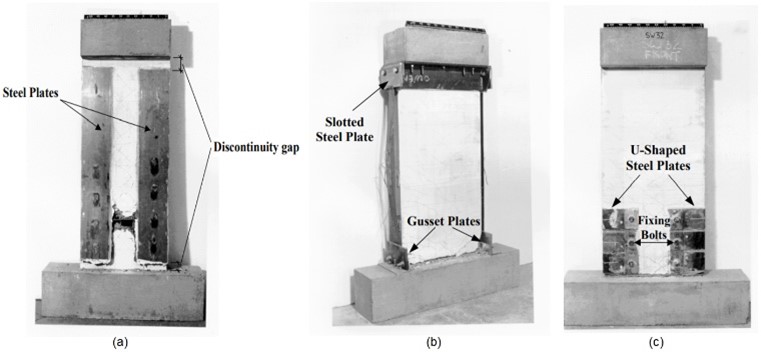
Figure 1. Different rehabilitation schemes studied by (Elnashai & Pinho, 1998)
(a) Stiffness only intervention (b) Strength only intervention (c) Ductility only intervention
For the renovation of frame buildings that are theoretically designed to withstand moments, steel bracings are commonly used. When careful consideration is given to how they engage with the pre-existing structure, these bracings have the necessary rigidity, strength, and ductility required for construction. Shear walls made of reinforced concrete can also perform better during earthquakes when using steel bracings. In such cases, the steel bracing can be regularly attached to the reinforced concrete wall, effectively reducing the buckling length. Instead of retrofitting moment-resistant frames, which is largely restricted by the buckling of the compressed bracing member, this method enhances the bracing member’s capacity. (Taghdi et al., 2000a, 2000b) tested a retrofitted RC wall. The modified wall’s behavior at 1.0% drift is shown in Figure 2. Test results revealed that the repaired wall could withstand lateral loads up to 2.8 times its original capacity and dissipate up to 4 times as much energy. These findings demonstrate the effectiveness of this technology for retrofitting RC walls.
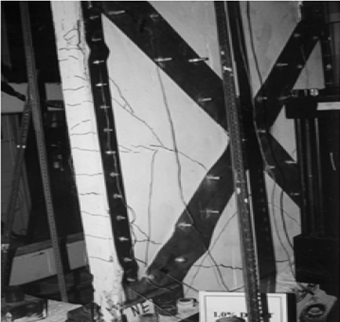
Figure 2. Retrofitted RC Shear Wall Using Steel Bracing At 1% Drift (Taghdi et al., 2000b)
Steel rods, which might be fastened throughout the entire thickness of the wall, were employed by (Mosalam et al., 2003) to secure the wall. The concrete can have the rods either bonded or unbonded (Figure 3). They researchers concluded that implementing this strategy enhances the wall’s performance and helps prevent collapse in certain sections of the wall.

Figure 3. The RC Wall Strengthened Using Through-Thickness Rods (Mosalam et al., 2003)
To enhance the flexural behaviour, a vertical retrofit was executed at each end of the wall, focusing on the slender wall. Steel plate, epoxy, and non-shrink grout were utilized as retrofit resources, and they were affixed to the pre-existing shear wall using post-installed chemical anchors.
The research’s predecessor, (Kim et al., 2021) developed a retrofit approach (Figure 4) by digging boundary elements on the existing reinforced shear wall and utilizing reinforcement and concrete to build them. The amount of reinforcement was determined using the ultimate strength design approach to raise the flexural strength to the necessary level. The ends of the shear wall were also detached to the required length for reinforcement configuration. Furthermore, the transverse rebar of the current shear wall, which has been set aside about 100 mm or more, links the previously existing shear wall and the recently built boundary elements when the cut phase of the shear wall ends. This retrofitting method was named “excavating retrofit method” as a result.

Figure 4. Elevations of Flexural Reinforcement Using Steel.
(a) Existing Wall; (b) Installation of Base Plate; (c) Installation of Vertical Retrofit Material; (d) Welding and Filling Grout, (Kim et al., 2021)
The retrofit material utilized in the flexural retrofit technique includes steel plates and rectangular welded steel tubes created by welding steel plates (Figure 5).
The primary distinction between both is that steel plate is connected to the wall much like the externally bonded retrofit (EBR), except that it does so in the direction of the thickness instead of along the length of the wall. After chipping the concrete cover thickness, the steel plate is affixed to keep the wall’s length constant. Furthermore, because the rectangular steel tube functions as both a formwork and a transverse rebar, the steel tube supplying the non-shrink grout within can function well under compression and tensile forces.

Figure 5. Elevations of The Specimen. (Kim et al., 2021)
(A) Solid (B) Plate (C) Tube
4.1.1. Connection Methods
Using a post-installed chemical anchor, the retrofit material was connected to the living building.
4.1.2. Result – Crack Pattern
Similar to the solid specimen, the plate specimen exhibited a standard flexural failure configuration.
When contrasted to the solid specimen, the bottom portion showed indications of tearing or fracturing. On the other hand, the tube specimen demonstrated an unusual fracture configuration. Although there were fractures between the steel tube and the pre-existing wall during the lateral loading, there were none until the ultimate load was achieved in the pre-existing wall’s structure, unlike in the solid specimen. Vertical and horizontal cracks developed in the bottom part after achieving the ultimate load, but these cracks did not propagate. (Figure 6)
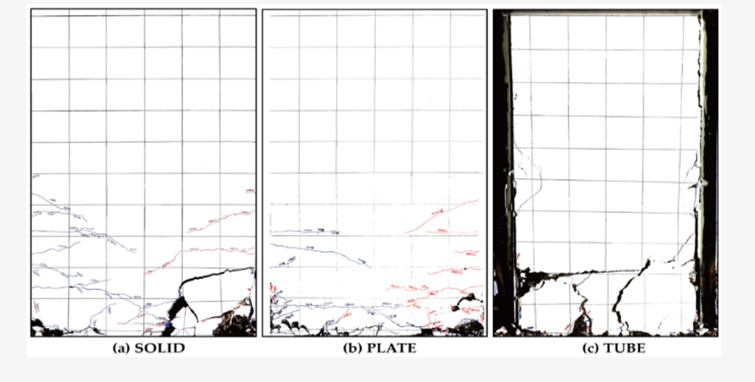
Figure 6. CRACK Pattern of Specimens after Experiment. (Kim et al., 2021)
In contrast to the steel tube, which could effectively resist significant compressive forces, the steel plate was quite breakable after buckling when subjected to compressive forces at the end of the wall. Furthermore, the internal non-shrink grout exhibited larger compressive performance due to the effects of confinement.
These are the findings derived from the current research:
– The use of steel for flexural retrofitting increases the flexural strength of shear walls by 16–29%. Additionally, the displacement ductility ratio of the shear wall may additionally be boosted by 200–400%.
– If a post-installed chemical anchor, it may result in wider fractures or more serious harm. In such cases, either the connection technique with the retrofit material should be considered or the transverse rebars of the old wall should be kept as much as achievable.
– The collapse of the anchor’s bond and the removal of the old wall’s transverse rebar are believed to have prompted the refitting of the wall with steel tubes. Vertical fractures developed along the anchor line linking the steel tube to the present wall on the side of the wall as opposed to the horizontal flexural fracture on the outer layer of the present wall due to the anchor bond breakdown linked to the foundation.
– Employing welding between the steel and the transverse rebars could serve to link the retrofit to the present wall. The use of high-strength steel or high-performance chemical anchors might also enhance the connection between the steel and the slab or foundation.
Varying types of rocking have been a subject of research for several investigators, including single rocking walls (Kurama et al., 1999; Perez et al., 2004; Sharma & Aaleti, 2019) and jointed rocking walls (Aaleti & Sritharan, 2009; Zhao & Sritharan, 2007). For energy loss and damping, mild steel energy uptakers such as low yield strength tapered longitudinal reinforcement or dogbone-shaped mild reinforcing bars have been employed to link the wall with the base (Holden et al., 2003; Rahman & Restrepo-Posada, 2000; Restrepo & Rahman, 2007; Smith & Kurama, 2014), O-shaped linkages within wall panels have been used (Henry, 2011; Twigden & Henry, 2015).
To accommodate increased displacement requirements and ensure minimal damage, external confining devices, damping mechanisms, improved cementitious materials, or jacketing can be applied (Basereh et al., 2020; Kam et al., 2010; Kam & Pampanin, 2008; Pampanin et al., 2006; Yang & Okumus, 2017). Ireland et al. (2007) employed external energy dissipaters to assess the strength and residual drift of retrofitted walls after debilitating reinforced concrete shear walls utilizing vertical and/or horizontal straight base cuts (Ireland et al., 2007).
A comprehensive investigation was conducted to assess the influence of various cut shapes on the overall behaviour of retrofitted walls (Basereh et al., 2020). The study focused on understanding how varying cut shapes affect critical factors such as energy dissipation capacity, lateral strength, residual displacement, secant stiffness, and the distribution of principal strains in both pre- and post-retrofit walls. Furthermore, the study presented a detailed analysis of the deformation patterns exhibited by the original and retrofitted walls, providing valuable insights into potential changes in the mode of failure. A cross-section of the base wall is shown in Figure 7.
The research examined the option of retrofitting self-centring to a cast-in-place reinforced concrete wall with a non-ductile cantilever. Several retrofitting walls that had different base cut shapes, including shear-key type trapezoidal, semi-circular, and triangular, were considered to lessen shear slipping at the base (Figure 8). As a result, it was concluded that utilizing self-centring and specific weakening as a retrofit approach could reduce lateral stability, secant stiffness, and residual displacement.
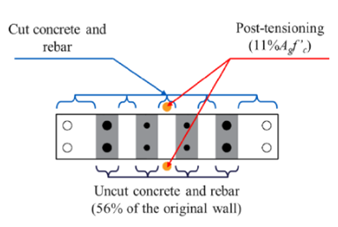
Figure 7. Wall Base Cross Section, (Basereh et al., 2020)
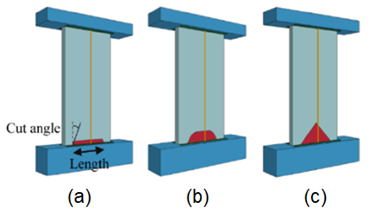
Figure 8. Retrofitted Wall Base Cuts Shapes:
(a) Shear-Key Trapezoidal, (b) Semi-Circular, (c) Triangular, (Basereh et al., 2020).
Here are the findings drawn from the current research:
– The flexure-shear reaction of a non-ductile cast-in-place reinforced concrete shear wall was changed into a vital action that involves reducing harm to the wall, regulating rocking displacements, and managing residual displacement.
– For the post-retrofit wall with a semi-circular base cut shape contrasted to the pre-retrofit wall, shear’s contribution to the overall deformation dropped upwards of 76%.
– Compared to other base cut forms, the trapezoidal (Shear-key type) wall base cut shape more effectively managed sliding shear.
– In comparison to other cut forms, the circular shape wall base cut shape exhibited the least impact from shear and consequently demonstrated the lowest tensile breaking and compressive crushing.
– The configuration of the wall’s base cut has no impact on lateral strength.
Employing CFRP wraps and through-thickness heading reinforcement, Paterson and Mitchell (2003) retrofitted a reinforced shear wall. The retrofit strategy aimed at enhancing wall confinement and shear strength. Besides being capable of dissipating three times more energy than the original wall, the modified wall achieved displacement ductility levels that were 57% higher than those of the control wall (Paterson & Mitchell, 2003). Khalil and Ghobarah (2005) examined two RC walls renovated using FRP. The renovate sought to improve the walls’ shear capacity and ductility. By placing uni-directional horizontal U-wraps around the end columns, and two layers of bi-directional diagonal fibers around the wall, the first block was repaired. As seen in Figure 9(a), FRP anchors were employed to fasten the horizontal U-wraps. The second wall was repaired employing the same technique; however, as shown in Figure 9(b), the U-wraps were fastened employing nine bolts on each side along the column height. Furthermore, four steel through-thickness bolts were placed at the upper and lower areas of the diagonal FRP sheets. The findings revealed that the lateral load capacities of the first and second walls had improved by roughly 40 and 57% respectively. In contrast to the control wall’s displacement ductility of less than one, the two restored walls achieved displacement ductility values of 3 and 4 at their maximum strength. The research also concluded that the employing of steel anchors nearly fully utilizes the material, leading to a significant improvement in wall performance compared to FRP (Khalil & Ghobarah, 2005).
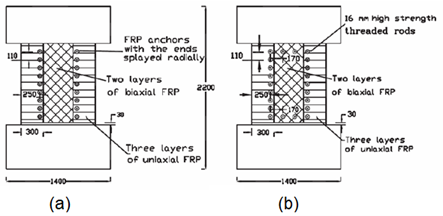
Figure 9. The two restoration strategies examined in the study conducted by (Khalil & Ghobarah, 2005)
(a) Wall 1, (b) Wall 2
In the field of retrofitting reinforced concrete (RC) shear walls, technological advancements have introduced innovative materials such as Engineered Cementitious Composites (ECC), announcing a new era of structural enhancement. ECC, characterized by its exceptional ductility, durability, and self-healing properties, has demonstrated remarkable potential through rigorous experimental studies. Research conducted at institutions like the University of Michigan and the University of California, Berkeley, has delved into ECC’s application in retrofitting shear walls. These studies have unveiled how ECC overlays effectively enhance shear wall performance by improving ductility, controlling cracking, and increasing energy dissipation capacity — all crucial factors for seismic resilience. Complementing this material innovation, advanced technologies have facilitated a deeper understanding of the impact of ECC retrofitting. An experimental investigation was conducted at Tongji University in China to study the repair of a damaged reinforced concrete (RC) shear wall using ECC (Y.-M. Zhang et al., 2015). The shear wall initially underwent a pseudo-static test, resulting in severe damage in shear mode, including concrete crushing, steel bar yielding, and fracture. Subsequently, the shear wall was repaired using ECC and subjected to retesting. A comparison was drawn between the responses of the RC shear wall in the two pseudo-static tests to evaluate several aspects, including the effectiveness of ECC-based repair for damaged RC shear walls in terms of failure mode, load-bearing capacity, displacement ductility, energy dissipation, stiffness degradation, and steel bar utilization. The outcomes of the tests revealed that:
A series of reverse cyclic loading experiments were conducted on four distinct specimens. The specimens comprised a conventional steel-reinforced concrete shear wall (SW-R-C), a shear wall reinforced with both steel and Engineered Cementitious Composites (SW-R-ECC), a concrete wall strengthened with Shape Memory Alloys (SMA) (SW-SMA-C), and a wall fortified with ECC and Shape Memory Alloys (SW-SMA-ECC). The test results yielded significant insights. Notably, the SW-SMA-C specimen displayed an impressive self-centering capability, exceeding 85%, even after undergoing substantial deformation—an achievement notably superior to the SW-R-C equivalent. Furthermore, the SW-SMA-ECC specimen exhibited enhanced durability, reduced damage, improved ductility, and minimized residual displacement. These findings collectively underscore the heightened effectiveness of coupling SMA with ECC in enhancing the seismic resilience of shear walls, offering a promising avenue for advancing seismic performance enhancement strategies (Kang et al., 2021).
Environmentally friendly materials and practices in retrofitting reinforced concrete (RC) shear walls are crucial for reducing the environmental impact of construction and improving the sustainability of existing structures. Shear walls play a significant role in providing structural stability to buildings during seismic events but retrofitting them can often involve resource-intensive processes. Here are some environmentally friendly approaches to consider:
1- Material Selection: Choose sustainable and recycled materials, such as reclaimed timber, recycled steel, and recycled concrete aggregates. These materials have a lower carbon footprint compared to virgin materials and help divert waste from landfills.
2- Low-Impact Construction Techniques: Utilize construction techniques that minimize disruption to the surrounding environment. Prefabrication and modular construction can reduce on-site waste and noise, as well as decrease the overall construction time.
3- Energy-Efficiency Upgrades: Incorporate energy-efficient measures during retrofitting, such as adding insulation to improve thermal performance, using reflective coatings to reduce heat absorption, and installing energy-efficient windows to enhance natural lighting and reduce the need for artificial lighting and heating.
4- Seismic Resilience: Design retrofit strategies that not only enhance shear wall performance during seismic events but also consider the overall lifecycle impact. This includes optimizing the retrofit design to ensure that the added materials and changes contribute positively to the building’s long-term sustainability.
5- Recycling and Waste Management: Implement a comprehensive waste management plan that focuses on recycling and responsibly disposing of construction waste. This can reduce the environmental impact associated with retrofitting activities.
6- Carbon Footprint Assessment: Conduct a life cycle assessment to evaluate the carbon footprint of different retrofitting options. This assessment can help identify the retrofit strategies that have the least environmental impact over the entire lifecycle of the structure.
7- Local Sourcing: Whenever possible, source materials locally to decrease transportation-related emissions. Local materials can also bolster the local economy and diminish the necessity for long-distance transportation.
8- Green Technologies: Integrate green technologies, such as renewable energy systems (solar panels, wind turbines), and rainwater harvesting to enhance the building’s overall sustainability while decreasing its dependence on conventional energy sources.
9- Longevity and Durability: Give priority to retrofit strategies that enhance the durability of the shear walls, thus reducing the necessity for frequent repairs or replacements.
10- Educational awareness: Promote awareness and education among stakeholders regarding the advantages of environmentally friendly retrofitting practices. Encouraging informed decision-making can result in more sustainable choices throughout the construction and retrofitting processes.
Incorporating these environmentally friendly materials and practices into the retrofitting of RC shear walls can contribute to the overall sustainability of the built environment and help mitigate the environmental impact of construction activities.
6.2.1. Retrofitting Older RC Buildings for Seismic Safety:
Buildings constructed using reinforced concrete (RC) before the 1970s continue to be in use worldwide, spanning both developed and developing nations. However, these buildings can be risky during earthquakes due to inadequate earthquake-resistant design. Prior to 1976, there weren’t strong rules for making buildings safe during earthquakes. This is a significant concern as earthquakes can result in poor performance and subsequent damages in these older buildings. Numerous seismic events over time have demonstrated the vulnerability of such buildings, causing considerable damage and losses. Efforts are now being directed towards finding solutions to enhance the earthquake resilience of these aging buildings. For instance, in the USA, the Federal Emergency Management Agency (FEMA) initiated a program in the 1980s to make these buildings stronger against earthquakes (Clark-Ginsberg et al., 2021).
Enhancing the seismic safety of old RC buildings involves the utilization of new materials like concrete, steel bars, and bricks. This process also requires multiple construction stages, such as pouring concrete and transporting materials to the building site. The construction industry has a significant global environmental impact, causing problems like resource depletion, waste generation, high energy consumption, and CO2 emissions (Khasreen et al., 2009; Menna et al., 2013; Zabalza Bribián et al., 2011) Considering the considerable number of aging buildings requiring seismic improvements, these activities can potentially have detrimental effects on the environment, contributing to the already substantial environmental footprint in both the US and worldwide. As a result, it is imperative to assess the environmental implications of various methods for retrofitting RC structures.
6.2.2. Environmental Impact of Retrofitting:
To enhance the earthquake resilience of these aging buildings, we need to use novel materials and construction methods. However, implementing these changes has an environmental impact. The construction industry globally uses a lot of resources, generates waste, consumes energy, and contributes to pollution. Considering the large number of buildings that need modifications to withstand seismic events, it becomes evident that these alterations can harm the environment. This concern is particularly pronounced in the US and worldwide. Thus, comprehending and quantifying the environmental impact across different approaches to retrofitting RC buildings becomes essential.
6.2.3. Using Life Cycle Assessment (LCA) to Understand Impact:
The approach of Life Cycle Assessment (LCA) is employed to measure the environmental effects of different retrofit options like RC column jacketing, beam weakening, and adding RC shear walls throughout their entire life cycle. This method follows the guidance provided by ISO 14,040 (Pryshlakivsky & Searcy, 2013) and ISO 14,044 (Finkbeiner et al., 2006), and it involves four main phases:
Life cycle assessment (LCA) serves as a tool to figure out how these changes impact the environment. It’s like looking at the whole journey of a product or process, from start to finish. While LCA has been employed to study many things related to buildings, the majority of studies have concentrated on new buildings. Some looked at costs over a building’s lifespan, but not many looked at the environmental impact. Its’s used to study how different ways of retrofitting RC buildings affect the environment from start to finish, including what happens when these changes are no longer useful. LCA compares the environmental impacts of many retrofit methods – adding strength to columns, weakening beams, and adding shear walls. It also looks at how recycling the waste from these changes can be better for the environment than just throwing it away. The goal is to help people decide on the best way to retrofit buildings while considering the environment.
From a technical perspective, researchers have explored various methodologies like GPS and GIS technologies for waste prevention and site material layout assessment (H. Li et al., 2005; Su et al., 2012) , waste technologies in design and construction (X. Zhang et al., 2012), and web-based applications for waste estimation and management optimization (Banias et al., 2011; Y. Li & Zhang, 2013).
In terms of management, previous studies have looked into project stages that influence waste prevention and management, including design specification quality (Vrijhoef & Koskela, 2000), construction planning (C. S. Poon, Yu, & Jaillon, 2004; C. S. Poon, Yu, Wong, et al., 2004), labor management (Saunders & Wynn, 2004), and material handling (Kpamma & Adjei-Kumi, 2011).
Models and simulations have been employed to enhance the comprehension of understand waste management within project processes. Instances of this include Building Information Modeling systems for waste planning and reduction (Sacks et al., 2010) , waste management mapping models (Lu et al., 2006; L. Y. Shen et al., 2004), and waste quantification models considering project works (Solís-Guzmán et al., 2009). These techniques also assess waste management strategies’ effects on reduction, economics, social performance, and environmental impact.
Measuring and evaluating the performance of retrofitted shear walls involves assessing their efficacy in enhancing the structural integrity and seismic resistance of a building. Here are some common methods and techniques employed for this purpose:
– Shake Table Tests: This test involves subjecting physical models of retrofitted shear walls to simulated earthquake motions on a shake table. This enables the observation of their behavior under realistic seismic conditions (Martinelli & Filippou, 2009; Priestley et al., 1978; Wight et al., 2007).
– Cyclic Load Tests: This approach employs full-scale or scaled-down specimens of retrofitted shear walls subjected to cyclic lateral loading. This simulation of seismic forces helps assess their response and performance (Cortés-Puentes et al., 2018; D. Shen et al., 2017).
– Pushover Tests: Explored by Wang & Ho (2007), pushover tests involve entail applying incremental lateral loads to retrofitted shear walls until failure occurs. This helps in comprehending their capacity and potential failure modes (Wang & Ho, 2007).
– Instrumentation: Supported by FEMA (Federal Emergency Management Agency), this approach involves equipping real-world retrofitted shear walls in buildings with sensors to monitor their performance during seismic events. This can encompass strain gauges, accelerometers, displacement sensors, and more (van de Lindt et al., 2016).
– Finite Element Analysis (FEA): Utilizing numerical simulations through FEA software, this method models retrofitted shear walls to predict their behavior under various loading conditions. This aids in identifying stress concentrations, potential failure points, and overall performance.
– Seismic Performance Assessment: Using structural analysis tools, engineers assess the building’s seismic performance with and without retrofitted shear walls. This involves comparing factors like inter-story drift, base shear, and displacements.
– Non-Destructive Testing (NDT): Explored by (Balendra et al., 2007).
– Ultrasonic Testing: Studied by Mistri et al. (2016), this technique employs ultrasonic waves to evaluate the material integrity of shear walls and identify any internal flaws or degradation (Mistri et al., 2016).
The retrofitting of structural systems involves modifying pre-existing buildings or structures to enhance aspects like performance, safety, functionality, or sustainability. These projects span a range from basic repairs and enhancements to intricate alterations and comprehensive overhauls. However, they also present a series of difficulties and potential hazards demanding meticulous preparation, design, and implementation (Passoni et al., 2020).
In the 21st century, cities are striving to provide optimal services in areas such as housing, healthcare, education, and public safety, with the aim of enhancing the well-being of residents. As urban populations rapidly growing, expected to encompass 65% of the global populace by 2050, cities face governance complexities alongside sustainability concerns due to concentrated human presence. Cities play a vital role in reducing greenhouse gas emissions, which is essential to combating climate change and boosting energy efficiency. Given that buildings hold a central role in urban life and contribute significantly to energy consumption and emissions, improving their efficiency became paramount, especially through retrofitting existing structures. Public policies that promote retrofitting interventions play a crucial role in overcoming economic barriers and driving market adoption. Despite extensive technical studies, only a limited number of address operational strategies for this challenge, and a comprehensive municipal-level analysis is lacking (Khairi et al., 2017).
The primary hurdle in retrofitting projects involves dealing with site constraints and the existing condition of structures. Depending on variables like age, location, and structure type, there might be limited access, limited space, or available resources for retrofitting work. This can involve challenges such as preserving architectural features in historical buildings or coordinating with stakeholders in high-rise buildings.
a) Structural Compatibility:
Another challenge in retrofitting projects involves ensuring the compatibility and integrity of both existing and new structural components. Retrofitting often means the addition, removal, or replacement of elements such as beams, columns, walls, and foundations, which can influence load distribution and overall stability. For instance, the addition of new floors may increase weight and load, while the removal of walls could reduce resistance. Careful analysis and simulation are crucial to effectively address these issues.
b) Cost and Schedule:
Managing project costs and timelines represents a third challenge in retrofitting. These projects can incur significant expenses and require considerable time due to their complexity and the potential for unforeseen issues. Delays and overruns can arise from unexpected site conditions, design changes, or material shortages. Extensive work might be necessary in the aftermath of events like fires, floods, or earthquakes. To tackle these challenges, engineers must rely on accurate estimations, efficient monitoring, and transparent communication with project stakeholders.
All the aforementioned concerns primarily pertain to the final outcome. However, one of the most crucial challenges during the retrofitting of an existing structure involves providing support while essential structural elements are removed, altered, or substituted. This task becomes particularly intricate when dealing with aging constructions, where the mortar between bricks or concrete masonry units (CMUs) is deteriorating, and previous, often unauthorized, modifications have disrupted the original load pathways. Deterioration in historic wooden structures is also a significant worry. Frequently, these deficiencies only become apparent once demolition has commenced. Sufficient propping or bracing, guided by an experienced shoring designer, emerges as a pivotal aspect to be addressed even before the first brick or nail is extracted from the pre-existing framework.
Modern retrofitting methods encounter challenges, such as integrating new technologies into existing structures and securing sufficient funding. Overcoming these hurdles involves conducting thorough structural assessments and exploring innovative financing models. Occupant disruption during retrofitting can be managed through careful planning and transparent communication, while environmental concerns are addressed by prioritizing sustainable materials and energy-efficient solutions. Regulatory obstacles can be navigated by collaborating closely with local authorities. By addressing these limitations, retrofitting can effectively enhance structural performance and sustainability.
Certainly, there are several real-world examples of projects where the performance and sustainability of RC shear walls have been enhanced through retrofitting and innovative design. Here are a few notable examples:
– The Palace of Fine Arts, San Francisco, USA (Bigalke, 2012; Shreve, 2006):
In this historic structure, seismic retrofitting was carried out to enhance its earthquake resistance. The existing RC shear walls were retrofitted using a combination of techniques, including the addition of external steel braces, the addition of new concrete shear walls, and the reinforcement of existing walls with fiber-reinforced polymers (FRP). This retrofitting project aimed to preserve the building’s historic character while improving its seismic performance.
– Bank of Italy Building, San Francisco, USA (L. V. Zhang et al., 2021):
This iconic structure underwent a comprehensive seismic retrofitting project to enhance its performance and meet modern seismic standards. The project involved installing supplemental RC shear walls, steel bracing, and base isolators to enhance the building’s seismic resilience. The retrofitting not only improved the building’s safety but also ensured its historical preservation.
– Los Angeles City Hall Seismic Retrofit, USA (Kelly, 1998):
The Los Angeles City Hall, a historic landmark, was retrofitted to improve its seismic performance. The retrofitting included adding new RC shear walls, strengthening existing walls with shotcrete, and installing base isolators. This project demonstrated the integration of modern engineering solutions with historical preservation.
– Palais des Congrès de Montréal – Montreal, Canada (Vézina & Pall, 2004):
The Palais des Congrès, a convention center, underwent a retrofitting project to improve its seismic performance. The method used included adding post-tensioned RC shear walls to strengthen the building’s resistance to lateral loads. The retrofit also incorporated sustainable features, such as green roofs and efficient energy systems.
– The New York Times Building – New York City, USA (Jeffrey et al., 2009):
The New York Times Building utilized an innovative retrofitting method called “exoskeleton” for seismic reinforcement. The method involved constructing external diagonal bracing around the building’s exterior, which acts as a support system. This approach not only improved the building’s seismic performance but also allowed for more open and flexible interior spaces.
In the future, retrofitting shear walls could involve advanced materials like carbon fiber composites, aided by digital twin simulations and IoT sensors for real-time structural monitoring. Machine learning might optimize retrofit strategies, while modular components could streamline installation. Seismic energy harvesting, resilient urban planning, and sustainable designs could gain prominence, driven by regulations, incentives, and collaborative tools, shaping a more resilient, energy-efficient, and technologically integrated approach to retrofitting shear walls.
These examples showcase various retrofitting methods, such as external bracing, fiber-reinforced polymers, post-tensioned shear walls, and base isolators. These methods not only enhance the performance of RC shear walls but also consider sustainability aspects, showcasing a holistic approach to structural improvement in the face of seismic events.
Utilizing Engineered Cementitious Composites (ECC) for the retrofitting of RC shear walls presents distinct advantages when compared to alternative retrofitting techniques, owing to its unique mechanical attributes. ECC showcases exceptional tensile strain capacity, heightened ductility, and strain-hardening behavior, enabling it to proficiently absorb and distribute seismic forces. This culminates in heightened energy dissipation, diminished susceptibility to brittle failure, and amplified structural resilience.
In contrast to certain traditional retrofitting methods necessitating the addition of extra materials like steel plates or external braces, ECC can be directly applied as a thin layer, thus minimizing alterations to the building’s visual appeal and functionality. This streamlined approach holds particular merit in preserving architectural authenticity and circumventing disruptions throughout the retrofitting procedure.
Furthermore, ECC’s intrinsic durability and resistance to corrosion establish it as a dependable long-term solution, decreasing the demand for recurrent maintenance and ensuring sustained structural performance across time.
In synopsis, the adoption of Engineered Cementitious Composites (ECC) to retrofit RC shear walls offers a blend of unparalleled mechanical traits, unobtrusive implementation, and enduring effectiveness, rendering it an alluring option that can surpass certain conventional retrofitting methodologies.
For practitioners engaged in retrofitting reinforced concrete shear walls, it is advised to assemble a multidisciplinary team including structural engineers, architects, and materials specialists. Staying updated with relevant building codes ensures safety and legality. After retrofit implementation, thorough performance testing should be conducted, and a maintenance plan established for ongoing assessment to prevent potential issues.
This paper analyzed comprehensive data related to structure maintenance and retrofitting utilizing both conventional and cutting-edge methods. It gave a thorough overview of strategies for strengthening structural components using various retrofitting techniques. It emphasized the value of retrofitting by describing how it helps the RC shear wall’s sustainability. The paper discussed extensively nine retrofitting methods, including the use of steel bracing, external post-tensioning, and fiber-reinforced polymer composite (FRC). These techniques provide unmistakable benefits for bolstering structural components. The report not only assessed the effectiveness of various methods but also suggested several intriguing lines of inquiry. To illustrate these ideas clearly, case stories from the real world were included. The article also went into great detail about the areas of ductility, strength, and durability, all of which are important factors for structural elements undergoing retrofitting procedures. Additionally, there was also an increasing understanding of the significance of striking a balance between performance and sustainability when dealing with upgrading reinforced concrete shear walls. This delicate balance is achieved by maximizing the strength and load-bearing capability of these components while also taking the ecological and long-term environmental implications of such alterations into account. By using modern materials, creative design approaches, and thorough analysis, engineers and architects collaborated to make sure that retrofitting efforts are in accordance with sustainable practices that decrease resource consumption and contribute to a greener built environment. A modern overview of the methods used in RC shear wall retrofitting was provided in the publication.
Cite: Edlebi, G. (2023). A Review of Enhancing Performance and Sustainability of RC Shear Walls. Steps For Civil, Constructions and Environmental Engineering, 1(1), 38–51. https://doi.org/10.61706/sccee120115
![]() Copyright: © 2023 by the authors. Licensee Scientific Steps International Publishing Services, Dubai, UAE.
Copyright: © 2023 by the authors. Licensee Scientific Steps International Publishing Services, Dubai, UAE.
This article is an open access article distributed under the terms and conditions of the Creative Commons Attribution (CC BY) license






An independent academic publisher with an editorial team including many of the top researchers in the world. SSG publishes research, review, and case report articles in double-blind, peer-reviewed, open access scientific and academic journals.
Copyright © 2025 Scientific Steps International Publishing Services LLC (Dubai – United Arab Emirates)